Rouen and our visit to the Normandy Beaches
Friday, August 30, 2013
 Rouen, Normandy, France
Rouen, Normandy, France
Day 4
This morning we awoke in Rouen before embarking on our much anticipated journey to the Normandy beaches where the D-Day landings took place . The other tour options for today included visiting Bayeux to view the famous tapestry or A Taste of Normandy food tour however for us the Normandy beach tour was the prime reason for choosing this River Seine cruise. Today we hope to learn more about this historic event which enabled the allied troops to force the retreat of the German Army from France and thereby turn defeat into victory in Europe.
For our tour, we joined the "American group" who were making the pilgrimage to honour their war dead buried in the Normandy American War Cemetery. Unlike our previous visit to France when we visited the Australian War Cemeteries to honour our soldiers who died on the Somme Battlefields - in Normandy there is no specific War Cemetery for Australians. Our tour guide explained that although there were approximately three thousand Aussies taking part in the D-Day conflict there are only 44 of our countrymen buried in various Commonwealth War graves in the Normandy region .
Of the three thousand Australians who served, five hundred served on British Royal Navy vessels while two thousand five hundred served with the Australian and British Air forces. Our Air force officers were engaged in a variety of missions on D-Day including towing Gliders and landing Paratroopers as well as participating in deceptive operations including dropping dummy paratroopers to confuse the enemy.
The "Battle of Normandy" was code named "Operation Overlord" while the actual landing was code named "Operation Neptune". The plan for Operation Neptune was to unleash the largest ever flotilla (6330 ships of all sizes) in a mass amphibious landing which it was hoped would ultimately halt the invasion by the German Army. While the troop landing was considered to be the prime force to defeat the Germans this could not be achieved without the aid of airborne troops descending by parachute and gliders to divert the enemy and add valuable resources to the operation .
Our coach journey would take two hours and for the majority of the trip we would follow the A13 highway until we reached a number of small coastal towns and villages before commencing our drive along the 50 miles of Normandy or Cote de Nacre coastline which was the location chosen by the Allies to land their troops on 6th June 1944. For the purpose of the landing the five beaches we would visit were code named Utah, Omaha, Gold, Juno and Sword - (along with their designated French titles these code names are still retained to this day).
Utah and Omaha were the designated beaches for the American troops with Gold and Sword, (the two smallest beaches) being chosen for the British army landing. Juno beach was allocated to the Canadians. The first beach we passed by was Sword then Juno where we photographed the huge "Cross of Lorraine" erected in the sand dunes to commemorate where General Charles de Gaulle returned to French soil following the D-Day landings . General de Gaulle had fled France for Britain four years earlier following the fall of Paris to the Germans and it was to Juno Beach he returned triumphantly on 14th June, 1944.
As we drove along the beaches we were surprised to see how many pieces of artillery from the landing had been left abandoned and were on display today. After driving past Gold Beach we reached the town of Arromanches where relics of the artificial Ports known as Mulberry Harbors were visible from the shore including some of Churchill's famous concrete landing port towed from the UK to anchor the floating causeway used for trucks and artillery to come ashore to support the troops during the landing.
Our visit to Arromanches also included a visit to the small museum dedicated to the landing where we viewed scale models of the floating ports and causeway which was reportedly the brainchild of Winston Churchill. Just amazing! Lunch had been arranged for us in one of the town’s restaurants after which we could take in the sights of the town before being driven to the clifftop overlooking Omaha and Utah beaches .
The clifftop known as "The Pointe Du Hoc" is the highest point between Utah and Omaha beaches and was the most amazing place to visit as the terrain has been left untouched since the battle and displays the many modes of fortification employed by the Germans. This was part of the coastline the Germans had turned into an unimpenetrable stronghold with guns, pillboxes, barbed wire and landmines. We viewed the huge open craters made by the relentless shelling from the allied ships and dotted among the craters are the well preserved remains of the huge German bunkers.
On D-Day "The Pointe Du Hoc" was captured for the allies by the US Army Ranger Assault Group who were landed by boat at the base of the cliffs and under constant cover-fire by the allied ships managed to scale the cliffs and after a fierce assault captured the German stronghold. At the commencement of the assault the Ranger Assault Group numbered 225 but in the aftermath of the battle their numbers were reduced to just 91 men .
We returned to our coaches and were driven down onto Omaha beach which when viewed today is just like any other beautiful beach you would expect to visit on a sunny summer’s day. Families were enjoying a day out – picnicking, swimming and building sandcastles. It was hard to believe this four mile stretch of beautiful beach was named "Beach of Blood" and bore witness to one of the most terrible battles in modern history.
We left the beach and drove another short distance to the Normandy American War Cemetery. Two years ago when we visited the Somme we were taken to the American War Cemetery located there so we were familiar with a large war cemetery however nothing prepared us for the sheer size of the Normandy cemetery.
There are in excess of 9600 graves plus the names of a further 1900 odd servicemen whose remains have never been recovered. In the cemetery each grave is marked by a single marble cross and the crosses appear to go on for row, upon row, upon row .
During our time in the cemetery we took part in a memorial service conducted by one of the American officials whose job it is to oversee the upkeep of the cemetery. Our tour group comprised over ninety people so it was quite a sizable group who participated in the service. The American national anthem and taps were played and concluded with a minute silence. It was a very moving occasion and we felt very privileged to have been part of it. Following the service we were presented with a single rose and asked to place it on a grave of our choosing. I chose to place my rose on an unknown soldier’s grave while Sal chose one of the names from the wall of a serviceman whose remains have never been found so was without a grave.
When you reflect on the sheer number of young men who lost their lives in this battle you realise the enormity of their loss when you consider this was not a long battle. The dates of the fallen are mainly 6th June, 1944 and those who passed beyond that date died as a result of injuries received on the 6th .
We arrived back on board the boat a little tired after experiencing such an emotional and moving day. We were all pleased we had chosen to see and learn a little more of the history of the Normandy beaches and the part they played in the D-Day landing that subsequently led to freedom in Europe.
Other Entries

 Rouen, Normandy, France
Rouen, Normandy, France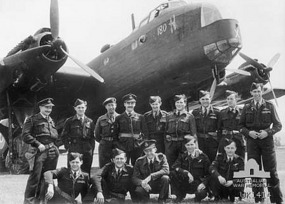
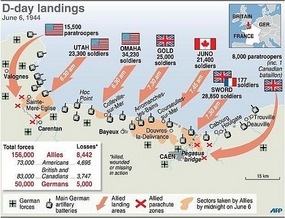
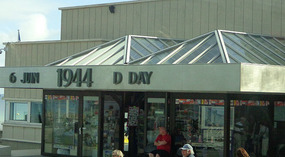
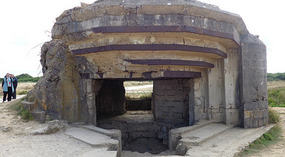
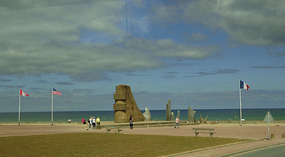
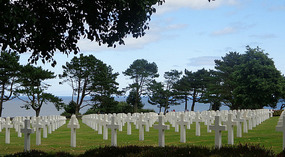
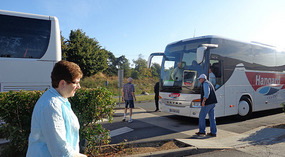











































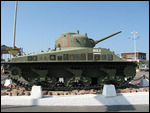




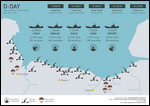

2025-05-22